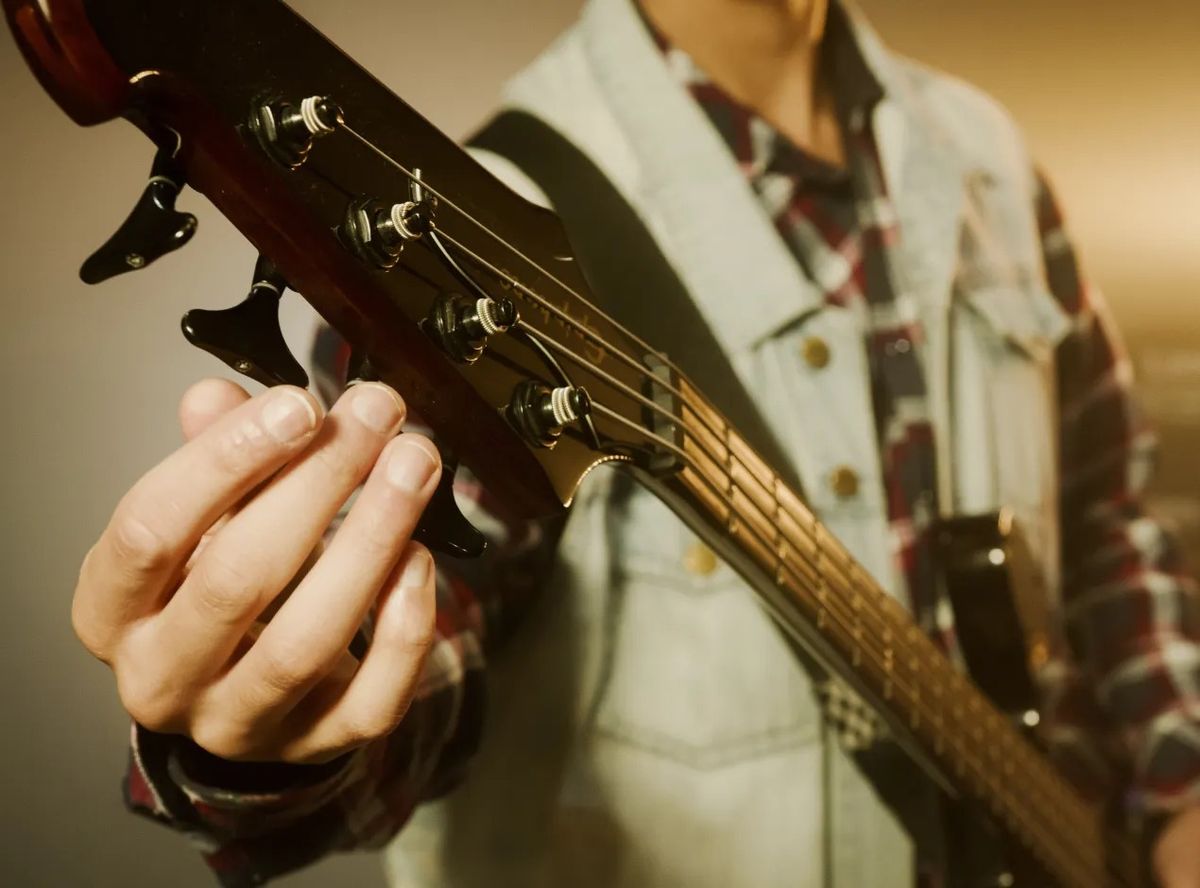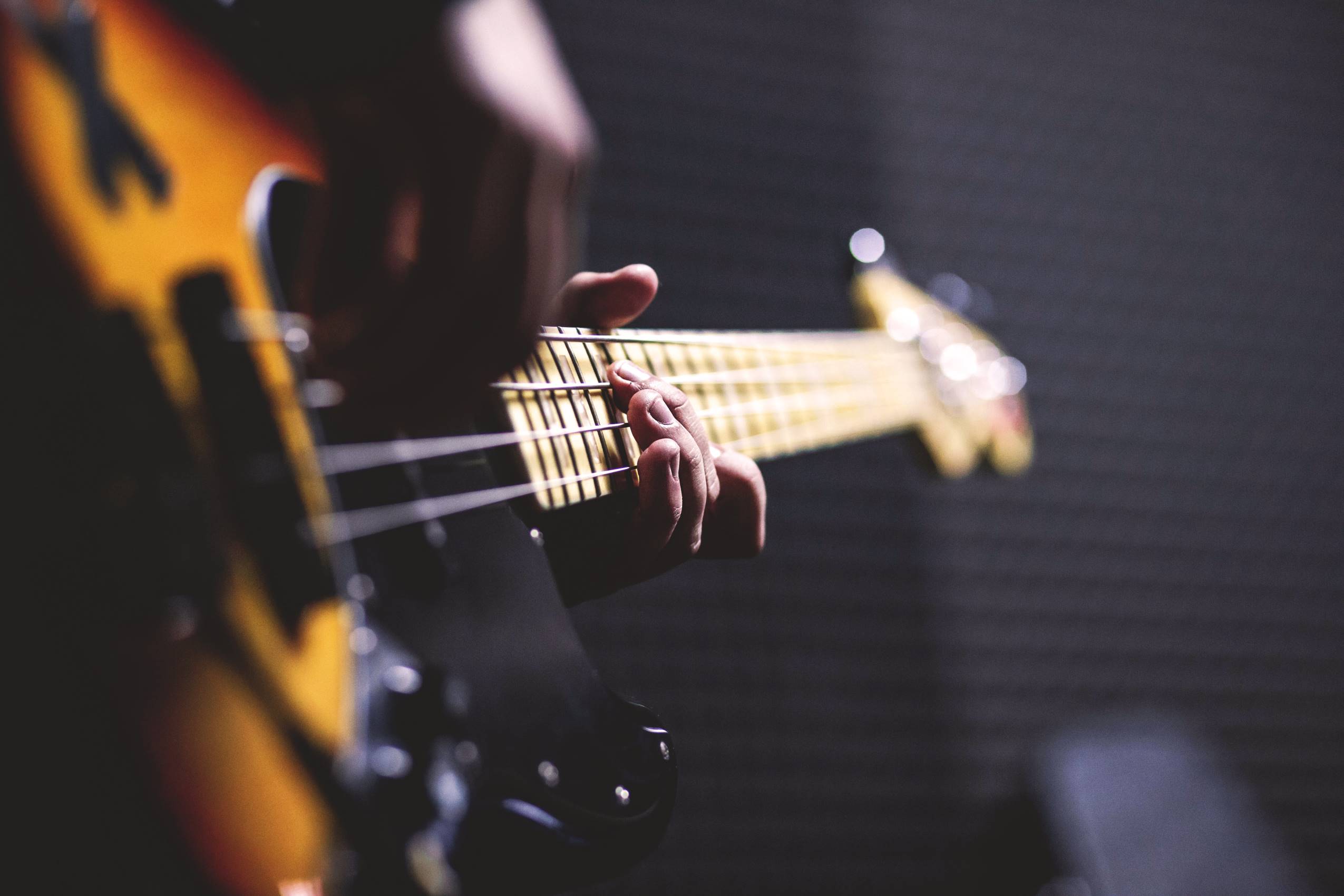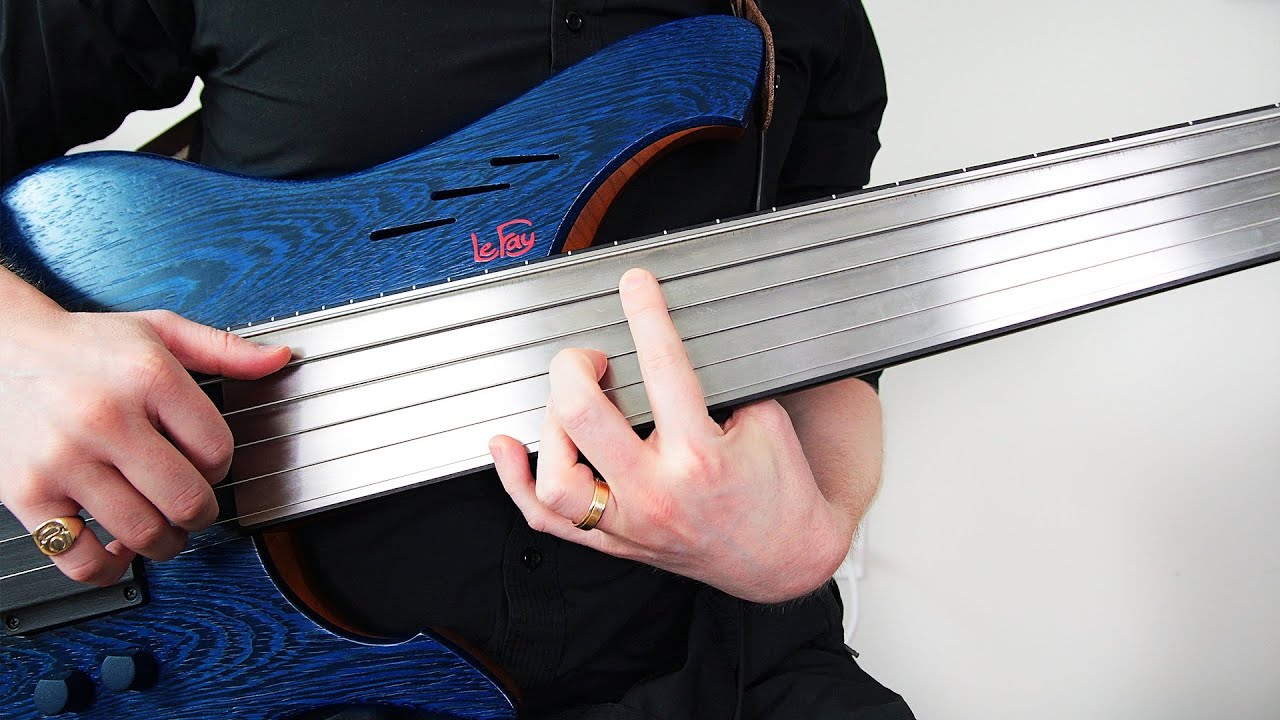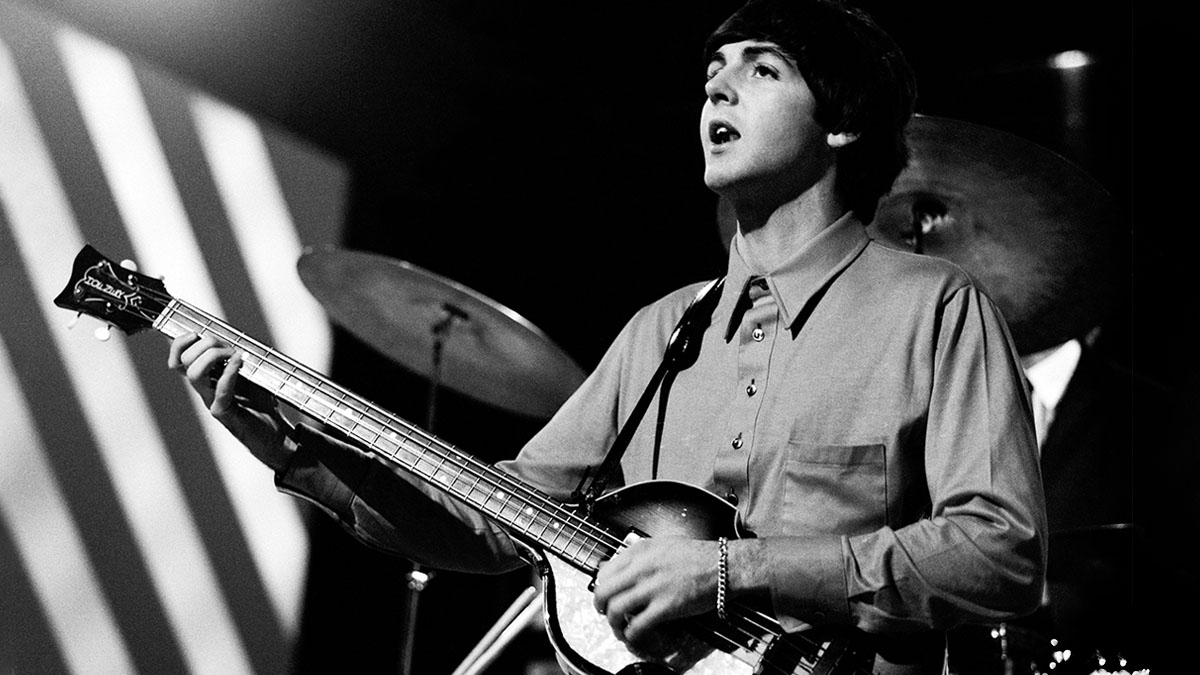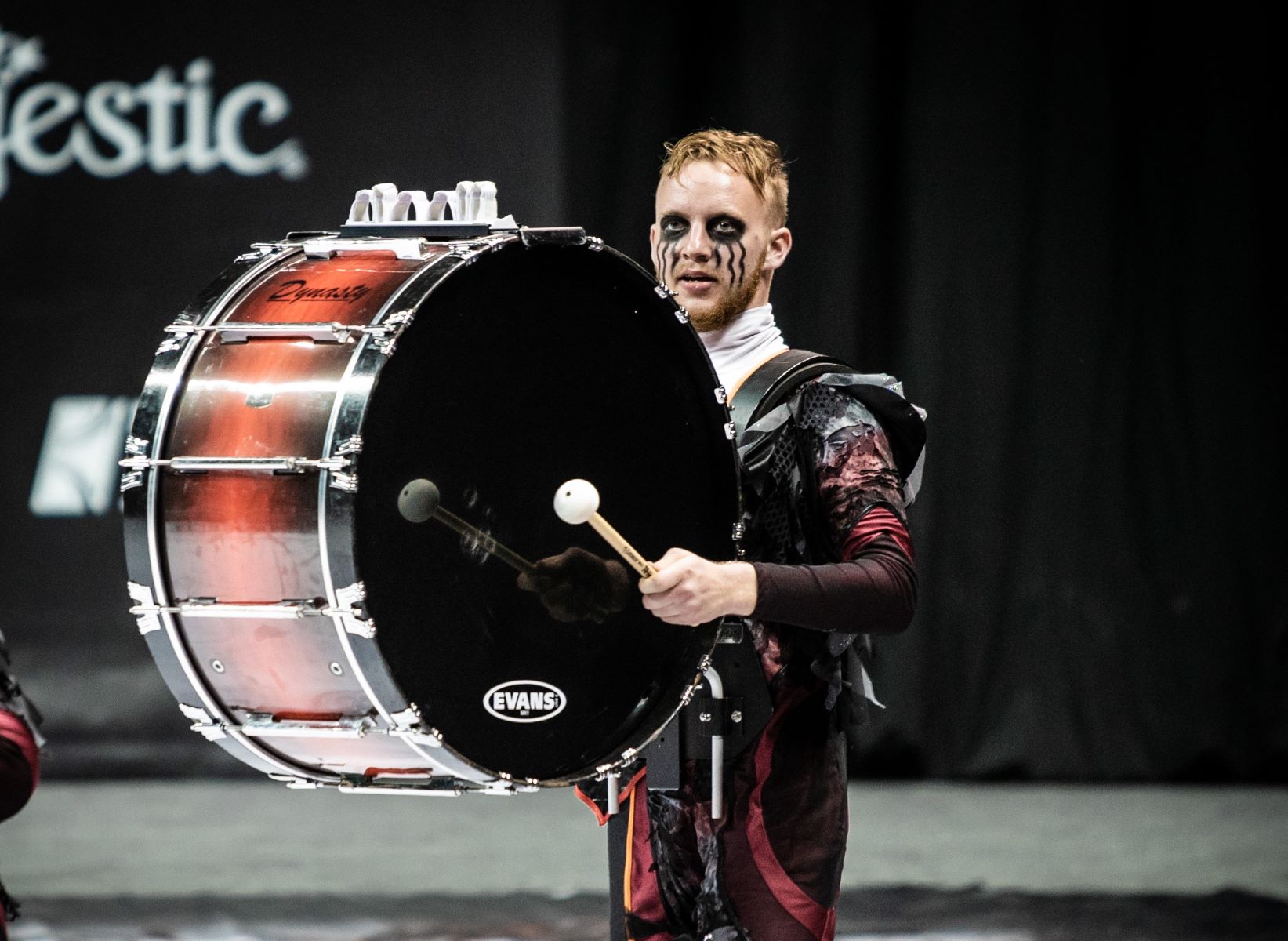Home>Instruments>Bass>What Bass Does Les Claypool Play


Bass
What Bass Does Les Claypool Play
Modified: January 22, 2024
Discover the bass that Les Claypool, the legendary musician, plays. Find out the renowned bass model and get insights into his unique playing style.
(Many of the links in this article redirect to a specific reviewed product. Your purchase of these products through affiliate links helps to generate commission for AudioLover.com, at no extra cost. Learn more)
Table of Contents
Introduction
Les Claypool, the renowned American musician and songwriter, is widely recognized for his incredible bass playing skills. As the frontman of the alternative rock band Primus, Claypool has enthralled audiences for decades with his unique and innovative bass lines. His distinctive playing style, coupled with his eccentric personality, has made him a celebrated name in the world of bass guitar.
Born in 1963, Claypool grew up with a deep passion for music and quickly gravitated towards the bass guitar. Over the years, he has developed a mesmerizing technique that blends various genres such as funk, metal, and experimental rock. Claypool’s playing is characterized by fast-paced fingerpicking, slap and pop techniques, and intricate rhythmic patterns.
Les Claypool is known for his incredibly versatile approach to composing and performing. His bass lines are intricate and melodic, often serving as both the rhythmic foundation and a lead instrument. He seamlessly incorporates elements from different musical styles, showcasing his immense versatility and creativity.
Claypool’s bass playing has not only inspired countless aspiring musicians but has also propelled him to be recognized as one of the greatest bassists of all time. His virtuosity and distinct sound have become synonymous with the Primus sound, setting him apart from other bassists in the industry.
In this article, we will delve into the fascinating world of Les Claypool’s bass playing. We will explore his signature bass guitars, his approach to modifying instruments for unique sound, the effects and pedals he uses, as well as his amplifier and rig setup. Whether you are a longtime fan or just discovering his music, join us on this bass-driven journey through the mind of Les Claypool.
Les Claypool’s Bass Playing Style
Les Claypool’s bass playing style is truly one-of-a-kind. He has managed to carve out a niche for himself in the world of music with his distinctive and innovative approach. Claypool’s playing blends various techniques and influences, resulting in a sound that is both captivating and mesmerizing.
One of the most notable aspects of Claypool’s bass playing is his remarkable fingerpicking technique. He utilizes a unique combination of fingers, using both his index and middle fingers to pluck the strings. This allows him to achieve a rapid and intricate sound, enabling him to navigate complex bass lines with ease.
In addition to fingerpicking, Claypool is also a master of the slap and pop technique. This technique involves striking the strings with the thumb and popping them with the fingers to create a percussive and rhythmic sound. Claypool’s ability to seamlessly integrate slap and pop into his playing adds another layer of depth and complexity to his bass lines.
Another element that sets Claypool apart is his use of harmonics. He utilizes harmonics to create unique and ethereal tones, often incorporating them into his bass lines to add texture and depth to the music. This technique, along with his impeccable timing, allows him to create a truly mesmerizing sonic experience.
Claypool’s bass playing style is also characterized by his ability to seamlessly blend various genres. He effortlessly transitions from funk to metal, from rock to experimental, creating a sonic landscape that is eclectic and captivating. His versatility as a bassist is showcased through his ability to adapt his playing to fit different musical styles and contexts.
Moreover, Claypool’s use of complex rhythmic patterns adds a layer of intricacy to his bass lines. He often incorporates unconventional time signatures and syncopation, pushing the boundaries of traditional bass playing. This rhythmic complexity further contributes to the unique and captivating nature of Claypool’s bass playing style.
Overall, Les Claypool’s bass playing style is a testament to his immense talent and creativity. His ability to seamlessly blend techniques, genres, and rhythms creates a sonic experience that is unlike anything else. With his virtuosic skills and innovative approach, Claypool continues to push the boundaries of bass playing and inspire musicians around the world.
Signature Bass Guitars
When it comes to bass guitars, Les Claypool has a knack for choosing instruments that perfectly suit his unique playing style and sonic preferences. While he has played and experimented with numerous basses throughout his career, there are a few signature models that have become synonymous with his sound.
One of Claypool’s most iconic bass guitars is the Carl Thompson 4-string fretless bass. Custom-built by renowned luthier Carl Thompson, this bass is a true work of art. Its fretless design allows Claypool to achieve smooth glissandos and sliding notes, adding a touch of expressiveness to his playing. The deep, growling tone of the Carl Thompson bass perfectly complements Claypool’s playing style and is often heard on many of Primus’ albums.
Another notable bass in Claypool’s arsenal is the Pachyderm Bass. This unique instrument was created by luthier Dan Maloney specifically for Claypool. The Pachyderm Bass features a hollowed-out body made from a fiberglass elephant statue, giving it a visually striking appearance. Its distinct tone and resonance add a unique flavor to Claypool’s bass lines.
Claypool has also been known to play a variety of Fender basses throughout his career. One notable model is the Fender Jazz Bass, which he has used on many recordings and performances. The Jazz Bass’s versatile tone and comfortable playability make it a popular choice among bassists in various genres, including Claypool.
Furthermore, Claypool has collaborated with bass manufacturer Warwick to produce a signature model known as the Warwick Streamer. This bass features a unique body shape and specialized pickups, designed to replicate Claypool’s preferred tone and provide exceptional playability.
It is important to note that while Claypool may have signature bass models, he is not limited to playing these instruments exclusively. His collection includes a wide range of basses, and he often chooses different instruments based on the specific sound and character he wants to achieve for each project or performance.
Les Claypool’s selection of signature bass guitars reflects his commitment to finding instruments that perfectly complement his playing style and allow him to create the distinctive sound that has become his trademark. Whether it’s the futuristic design of the Warwick Streamer, the deep resonance of the Carl Thompson bass, or the versatility of the Fender Jazz Bass, Claypool’s choice of instruments contributes to his dynamic and captivating bass playing.
Modifying Basses for Unique Sound
Les Claypool’s quest for distinctive and innovative sounds extends beyond his choice of bass guitars. He is known for his willingness to experiment with modifications to his instruments, pushing the boundaries of traditional bass playing and achieving a unique sonic palette. Claypool’s modifications not only enhance the playability and versatility of his basses but also contribute to the distinctive character of his sound.
One notable modification Claypool has made to his bass guitars is the installation of additional pickups. By adding extra pickups, he is able to access a wider range of tones and capture different sonic characteristics. This modification allows him to seamlessly switch between different pickup combinations, giving him greater control over the sound he produces.
In addition to pickup modifications, Claypool has been known to use custom wiring configurations on his basses. These unique wiring setups can include series/parallel switching, bypassing tone controls, or even adding additional switches for more tonal options. Through these modifications, he can achieve a vast array of tones and timbres, enabling him to explore new sonic landscapes.
Another modification technique Claypool employs is altering the hardware of his bass guitars. He may experiment with different bridge types, tuners, or even unusual string configurations. These modifications can have a significant impact on the instrument’s overall tone, sustain, and playability. By customizing his basses in this way, Claypool can achieve the specific characteristics he desires for each song or performance.
Claypool is also known for his unique approach to string selection and setup. He often uses unconventional string gauges, such as mixing heavy-gauge strings for the lower strings and lighter gauges for the higher strings. This non-traditional string setup allows him to achieve the desired tension and tone for his playing style, resulting in a more personalized sound.
Furthermore, Claypool has been known to experiment with different materials for his bass guitar bodies and necks. He has used instruments made from unconventional materials such as carbon fiber or acrylic, which can have a significant impact on the overall tone and resonance of the instrument. This exploration of different materials adds yet another layer to his quest for a unique and distinctive sound.
Les Claypool’s approach to modifying his bass guitars for a unique sound is a testament to his experimental nature and his commitment to pushing the boundaries of conventional bass playing. By customizing his instruments through modifications to pickups, wiring, hardware, strings, and materials, Claypool enhances the versatility and sonic possibilities of his basses, enabling him to create the diverse soundscape that has become his signature.
Effects and Pedals Used by Les Claypool
Les Claypool’s bass playing style is not only defined by his technique and choice of instruments but also by the creative use of effects and pedals. He utilizes a diverse range of effects to shape his sound, adding depth, texture, and unique sonic qualities to his bass lines. Claypool’s selection and use of effects pedals contribute significantly to the distinctive and captivating nature of his playing.
One of the most prominent effects in Claypool’s arsenal is the Octave pedal. He often employs octave effects to create a deep, subsonic sound that adds richness and thickness to his bass lines. The octave pedal allows Claypool to supplement his playing with lower or higher octaves, giving the illusion of multiple bass players and expanding the sonic possibilities of his bass lines.
Claypool also frequently utilizes distortion and overdrive effects to add grit and intensity to his bass sound. By pushing the signal through these effects, he can achieve a saturated and edgy tone, perfect for creating an aggressive and powerful presence within the music. These effects are especially prevalent in Primus’ heavier and more aggressive compositions.
An essential tool in Claypool’s pedalboard is the Wah pedal. This effect allows him to shape the frequency response of his bass signal, creating a dynamic and expressive tonal range. By controlling the movement of the pedal, Claypool can achieve a vocal-like quality, adding a distinct character and emotiveness to his bass lines.
Additionally, Claypool incorporates modulation effects such as chorus, flanger, and phaser into his bass playing. These effects introduce sweeping and swirling textures, adding movement and depth to his sound. Claypool employs these effects subtly, often using them to enhance specific sections of a song or to create a psychedelic atmosphere.
Furthermore, Claypool’s experimentation with unconventional effects contributes to his unique sonic palette. He has been known to use the Whammy pedal to create pitch-shifting effects and wild dive bombs, as well as the envelope filter for funky, quacking sounds. These unorthodox effects allow Claypool to explore unconventional tonal and textural possibilities, adding a touch of unpredictability to his bass playing.
It is worth noting that although Claypool uses a wide range of effects and pedals, he exercises restraint in their application, using them as tools to enhance the music rather than relying on them solely for novelty. His skillful use of effects showcases his creativity and his ability to sculpt his sound to fit the composition and mood of each song.
Les Claypool’s careful selection and masterful use of effects and pedals play a crucial role in shaping his distinct bass sound. The combination of octave effects, distortion, wah, modulation, and unconventional effects all contribute to the sonic richness and versatility of his playing. Claypool’s utilization of effects is a testament to his artistic vision and commitment to exploring new sonic territories while maintaining the integrity and musicality of his bass lines.
Amplifiers and Rig Setup
Les Claypool’s quest for sonic experimentation and capturing the perfect bass tone extends beyond his choice of bass guitars and effects pedals. His amplifiers and rig setup play a crucial role in shaping his distinctive sound. Claypool’s approach to amplification involves a combination of vintage and modern equipment, allowing him to achieve the desired tone and projection for his bass playing.
One of the key components of Claypool’s rig is his choice of amplifiers. He has been known to favor a variety of vintage and boutique bass amplifiers for their unique characteristics. Companies like Ampeg, Mesa/Boogie, and Gallien-Krueger have featured prominently in his setup. These amplifiers offer a range of tonal options, providing the power, warmth, and clarity that Claypool requires for his playing style.
Claypool often utilizes a multi-amp setup, where he runs different amplifiers simultaneously to achieve a layered and nuanced sound. This setup allows him to blend different tones, utilizing the strengths of each amplifier and creating a diverse sonic palette. By combining multiple amps, he can achieve an astounding depth and richness in his overall sound.
In addition to amplifiers, Claypool incorporates various speaker cabinets into his rig. He has been known to use cabinets from brands such as Ampeg, SWR, and Mesa/Boogie. These cabinets are specifically designed to handle the low frequencies and dynamic range that Claypool’s playing demands.
Claypool’s rig setup also includes a range of other components to fine-tune his sound. He utilizes a combination of equalizers, compressors, and preamps to shape his tone and ensure maximum control over his bass sound. These additional components help him achieve the desired balance, dynamics, and clarity in his playing.
Furthermore, Claypool incorporates a DI (Direct Injection) box into his rig. This device allows him to send a direct signal from his bass into the sound system, ensuring consistency in his tone regardless of the venue. The DI box gives him the freedom to tailor his sound during live performances while retaining the character of his carefully crafted bass tone.
Claypool’s meticulous approach to his amplifiers and rig setup is a testament to his dedication to achieving the perfect bass tone. Through a combination of vintage and modern equipment, multi-amp setups, and a range of other components, Claypool is able to sculpt his sound with precision, resulting in the unique and captivating bass tone that has become his signature.
Conclusion
Les Claypool’s impact on the world of bass playing is undeniable. His unique style, innovative approach, and boundless creativity have firmly established him as a legendary figure in the music industry. Claypool’s ability to blend various techniques, genres, and sonic elements sets him apart as a true virtuoso of the bass guitar.
Throughout his career, Claypool has demonstrated a deep understanding of the instrument, pushing its boundaries and redefining what is possible. His fingerpicking, slap and pop technique, exquisite timing, and complex rhythmic patterns showcase his technical prowess and musicality.
Claypool’s selection of signature bass guitars, including the Carl Thompson fretless and the Pachyderm Bass, demonstrate his commitment to finding instruments that perfectly embody his unique sound. His modifications to these instruments further enhance their capabilities, allowing him to explore an even wider tonal spectrum.
Moreover, Claypool’s use of effects and pedals adds depth and texture to his bass playing. From octave effects, distortion, and wah, to modulation and unconventional effects, he masterfully incorporates these tools to shape his sound and create a sonic palette that is distinctly his own.
And let’s not forget Claypool’s amplifiers and rig setup, an essential component of his sonic exploration. The combination of vintage and modern equipment, multi-amp setups, and careful selection of cabinets and components contribute to the rich and captivating tone he is known for.
In conclusion, Les Claypool’s bass playing is a testament to his talent, artistry, and unwavering dedication to his craft. His distinctive style, signature bass guitars, modifications, effects, and rig setup all play a pivotal role in shaping his mesmerizing sound. Claypool’s contributions to the world of bass have not only inspired countless musicians but have also expanded the boundaries of what is possible on the instrument. Whether you’re a fan of his work with Primus or his various solo projects, there’s no denying the immense impact Les Claypool has had on the bass guitar and the realm of music as a whole.




